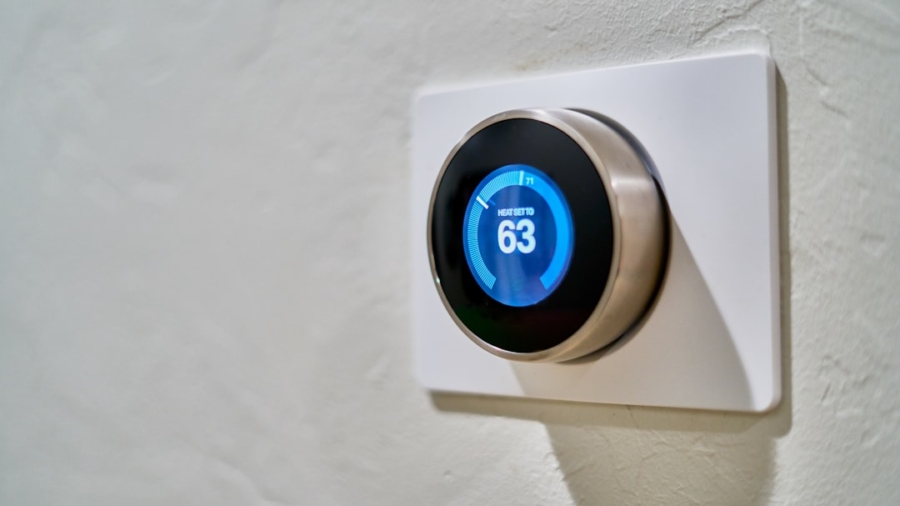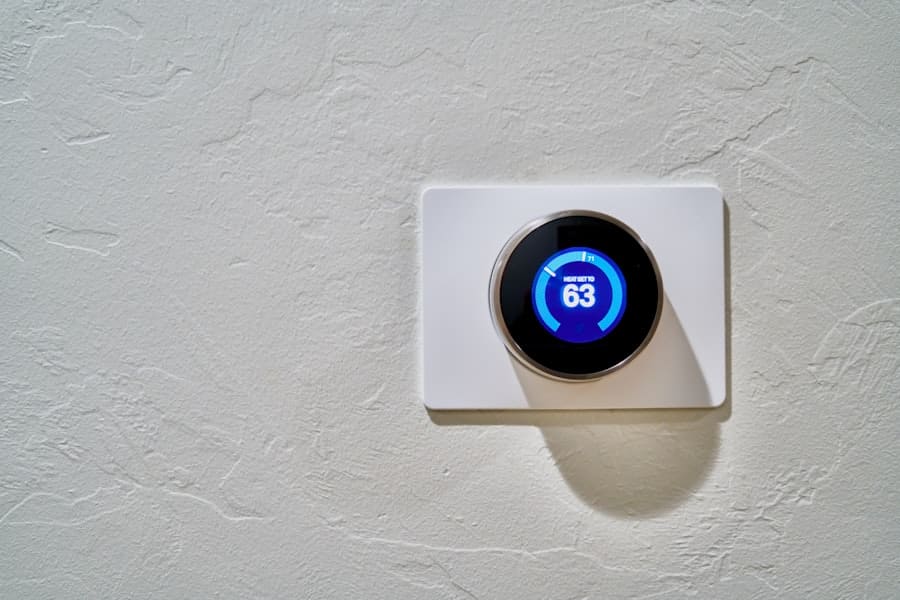The evolution of energy systems has reached a pivotal moment with the advent of smart energy grids, which represent a significant leap forward in how electricity is generated, distributed, and consumed. Unlike traditional power grids, which are often characterized by one-way communication and centralized control, smart energy grids leverage advanced technologies to create a more dynamic, responsive, and efficient energy ecosystem. These grids integrate digital communication technologies, sensors, and automation to facilitate real-time monitoring and management of energy resources.
The result is a system that not only enhances reliability and efficiency but also empowers consumers to take an active role in their energy usage. Smart energy grids are designed to accommodate a diverse array of energy sources, including renewable options such as solar and wind power. This flexibility is crucial in the context of global efforts to reduce carbon emissions and transition to sustainable energy practices.
By enabling two-way communication between utilities and consumers, smart grids facilitate demand response programs, where users can adjust their energy consumption based on real-time pricing signals or grid conditions. This shift towards a more interactive energy landscape is essential for addressing the challenges posed by climate change and the increasing demand for electricity in an era of rapid technological advancement.
Key Takeaways
- Smart energy grids are modernized electricity networks that use digital technology to monitor and manage the transportation of electricity from all generation sources to meet the varying electricity demands of end-users.
- 5G technology is the fifth generation of mobile networks, offering faster speeds, lower latency, and increased connectivity, making it ideal for supporting the complex communication needs of smart energy grids.
- 5G plays a crucial role in smart energy grids by enabling real-time monitoring and control of energy distribution, supporting the integration of renewable energy sources, and enhancing grid reliability and resilience.
- The benefits of 5G in smart energy grids include improved energy efficiency, enhanced grid security, increased renewable energy integration, and better support for electric vehicles and other emerging technologies.
- Challenges and considerations for implementing 5G in smart energy grids include cybersecurity risks, infrastructure costs, regulatory hurdles, and the need for collaboration among stakeholders.
Understanding the 5G Technology
Advanced Technologies Behind 5G
The architecture of 5G networks is built on a combination of advanced technologies, including millimeter-wave frequencies, massive MIMO (multiple input, multiple output) antennas, and network slicing.
Unparalleled Data Transfer Speeds
These innovations enable 5G to deliver data rates that can exceed 10 Gbps, which is up to 100 times faster than 4G LTE. One of the most compelling features of 5G is its ability to connect a massive number of devices simultaneously without compromising performance. This capability is particularly important in the context of the Internet of Things (IoT), where billions of devices—from smart appliances to industrial sensors—are expected to communicate with one another.
Enabling Critical Applications
The ultra-reliable low-latency communication (URLLC) aspect of 5G ensures that critical applications requiring immediate response times, such as autonomous vehicles or remote surgery, can function seamlessly. As such, 5G is not merely an enhancement of mobile technology; it is a foundational element for the next generation of smart applications across various sectors.
The Role of 5G in Smart Energy Grids
The integration of 5G technology into smart energy grids is poised to revolutionize the way energy systems operate. By providing high-speed connectivity and real-time data transmission capabilities, 5G enables utilities to monitor grid conditions with unprecedented precision. This enhanced visibility allows for more effective management of energy resources, including the integration of distributed energy generation sources like solar panels and wind turbines.
With 5G, utilities can gather data from thousands of sensors deployed across the grid, facilitating predictive maintenance and reducing downtime. Moreover, the low latency characteristic of 5G networks plays a crucial role in demand response initiatives.
For instance, during peak demand periods, consumers can be incentivized to reduce their usage or shift it to off-peak times when electricity is cheaper. This dynamic interaction not only helps stabilize the grid but also empowers consumers to make informed decisions about their energy consumption.
Benefits of 5G in Smart Energy Grids
The benefits of integrating 5G technology into smart energy grids are manifold and extend across various dimensions of grid management and consumer engagement. One significant advantage is the enhanced reliability and resilience of the energy supply. With real-time monitoring capabilities enabled by 5G, utilities can quickly identify and address issues such as outages or equipment failures before they escalate into larger problems.
This proactive approach minimizes service interruptions and enhances overall grid stability. Additionally, the efficiency gains from 5G connectivity can lead to substantial cost savings for both utilities and consumers. By optimizing energy distribution based on real-time data analytics, utilities can reduce operational costs associated with energy generation and transmission.
Consumers also stand to benefit from lower electricity bills as they gain access to dynamic pricing models that encourage energy conservation during peak periods. Furthermore, the ability to integrate renewable energy sources more effectively contributes to a greener energy landscape, aligning with global sustainability goals.
Challenges and Considerations
Despite the promising potential of 5G in smart energy grids, several challenges must be addressed to fully realize its benefits. One primary concern is the infrastructure required to support widespread 5G deployment. The installation of new antennas and base stations necessitates significant investment and coordination among various stakeholders, including government agencies, utility companies, and telecommunications providers.
In urban areas where space is limited, this can pose logistical challenges that may delay implementation. Another critical consideration is cybersecurity. As smart energy grids become increasingly interconnected through 5G networks, they also become more vulnerable to cyberattacks.
The potential for malicious actors to disrupt grid operations or compromise sensitive consumer data raises important questions about security protocols and regulatory frameworks. Ensuring robust cybersecurity measures are in place will be essential for building trust among consumers and stakeholders alike.
Case Studies of 5G in Smart Energy Grids
Several pioneering projects around the world illustrate the successful integration of 5G technology into smart energy grids. In South Korea, for instance, the government has launched initiatives aimed at creating a nationwide smart grid infrastructure supported by 5G connectivity. The project includes deploying advanced metering infrastructure (AMI) that allows for real-time monitoring of electricity consumption at the household level.
This initiative not only enhances grid management but also empowers consumers with detailed insights into their energy usage patterns.
The company has implemented a pilot program that utilizes 5G-enabled drones for inspecting power lines and substations.
These drones can transmit high-definition video feeds back to control centers in real time, allowing for rapid assessment of infrastructure conditions without the need for manual inspections. This innovative approach not only improves operational efficiency but also enhances safety by reducing the need for personnel to work in potentially hazardous environments.
Future Outlook and Potential Developments
Looking ahead, the synergy between 5G technology and smart energy grids is expected to deepen as both fields continue to evolve. Future developments may include the integration of artificial intelligence (AI) and machine learning algorithms into grid management systems powered by 5G connectivity. These technologies could enable predictive analytics that optimize energy distribution based on historical consumption patterns and real-time data inputs.
Moreover, as electric vehicles (EVs) become more prevalent, the role of 5G in managing EV charging infrastructure will be critical. Smart charging stations equipped with 5G connectivity could facilitate vehicle-to-grid (V2G) interactions, allowing EVs to not only draw power from the grid but also return excess energy during peak demand periods. This bidirectional flow of electricity could further enhance grid stability while providing additional revenue streams for EV owners.
Conclusion and Key Takeaways
The intersection of smart energy grids and 5G technology represents a transformative opportunity for modernizing our energy systems. By harnessing the capabilities of 5G—such as high-speed connectivity, low latency, and massive device support—utilities can enhance grid reliability, optimize resource management, and empower consumers with greater control over their energy usage. However, challenges related to infrastructure deployment and cybersecurity must be addressed to fully realize these benefits.
As we move forward into an era characterized by increasing demand for sustainable energy solutions, the collaboration between telecommunications providers and utility companies will be essential in shaping resilient and efficient smart energy grids. The ongoing development of innovative applications powered by 5G will undoubtedly play a pivotal role in driving this transformation while contributing to global sustainability goals.
In a recent article on ENICOMP, the importance of software testing in ensuring the efficiency and reliability of smart energy grids was highlighted. The article, titled “Best Software Testing Books,” delves into the various resources available for professionals looking to enhance their skills in this critical area. By implementing rigorous testing protocols, developers can ensure that the integration of 5G technology into smart energy grids is seamless and secure. To learn more about the best practices in software testing, check out the article here.
FAQs
What is 5G?
5G is the fifth generation of wireless technology, designed to provide faster and more reliable communication networks.
What are smart energy grids?
Smart energy grids are modernized electricity networks that use digital technology to monitor and manage the transport of electricity from all generation sources to meet the varying electricity demands of end-users.
How does 5G connect to smart energy grids?
5G technology enables smart energy grids to have faster and more reliable communication, allowing for real-time monitoring and control of electricity distribution.
What are the benefits of using 5G in smart energy grids?
The use of 5G in smart energy grids can lead to improved efficiency, reduced energy waste, better integration of renewable energy sources, and enhanced grid reliability and resilience.
Are there any challenges in implementing 5G in smart energy grids?
Challenges in implementing 5G in smart energy grids include the need for significant infrastructure investment, ensuring cybersecurity, and addressing potential regulatory and policy issues.



